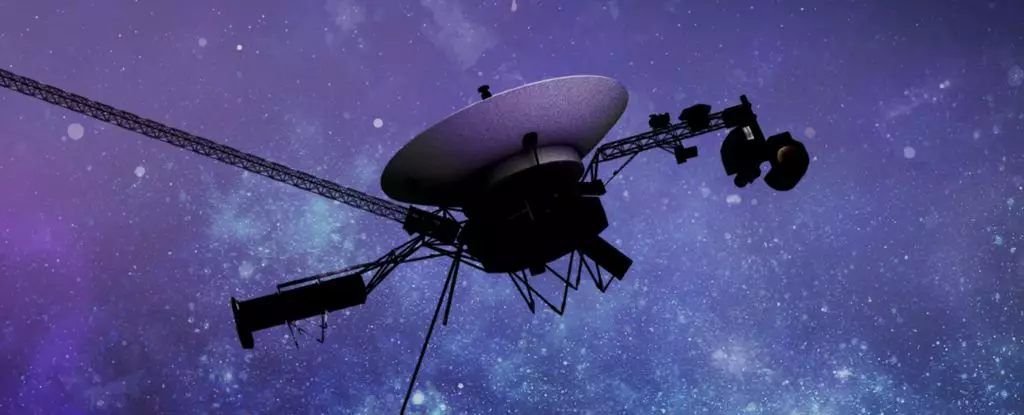After a lengthy period of transmitting incomprehensible data, Voyager 1, the farthest human-made object from Earth, is finally back in communication with scientists at NASA. This momentous occasion marks the resumption of normal science operations, allowing all four of the spacecraft’s instruments to collect and transmit valuable data from its interstellar journey.
The unexpected hiatus in Voyager 1’s data transmission in November of 2023 spurred scientists to investigate the cause of the anomaly. A malfunctioning chip in the probe’s memory system was identified as the culprit, potentially resulting from age-related deterioration or interference from energetic particles in space. The outdated technology of Voyager 1 necessitated engineers to consult archival manuals from the 1970s to rectify the issue.
Through diligent efforts, the team at NASA succeeded in restoring functionality to two of Voyager 1’s instruments on May 19, culminating in the reinstatement of all four instruments for data collection. The successful revival of the spacecraft’s scientific capabilities after months of downtime is akin to resetting electronics after a power outage, as described by an official account for Voyager 1.
Voyager 1, along with its companion Voyager 2, is on an unprecedented mission to explore regions of space previously uncharted by man-made objects. The data collected by these probes is instrumental in studying the interstellar medium, shedding light on the composition and boundaries of our solar system. Although often mistakenly believed to have exited the solar system, the Voyager probes have merely crossed the heliopause and are yet to venture into the hypothesized Oort cloud.
Despite the remarkable resilience displayed by Voyager 1, the inevitability of aging components poses a challenge to its longevity. The steady decline in power generation by the spacecraft’s generators dictates a limited operational lifespan, with projections estimating at least one instrument to remain functional until 2025. The arduous journey to the Oort cloud, encompassing centuries of travel, underscores the endurance and perseverance of the mission.
Ongoing efforts by NASA engineers to sustain Voyager 1’s communication capabilities involve maintenance of its digital tape recorder, a critical component for storing and transmitting data. The limited recording capacity of the memory system underscores the importance of preserving the spacecraft’s ability to convey information, as any loss in communication could result in forfeiting valuable scientific insights.
The recent restoration of Voyager 1’s data transmission capabilities symbolizes a triumph in the realm of deep space exploration. The perseverance and ingenuity of the team at NASA have reaffirmed the significance of the Voyager mission in unraveling the mysteries of the cosmos. As we eagerly anticipate the wealth of discoveries yet to come, the return of Voyager 1 serves as a testament to the enduring spirit of human curiosity and exploration.


Leave a Reply